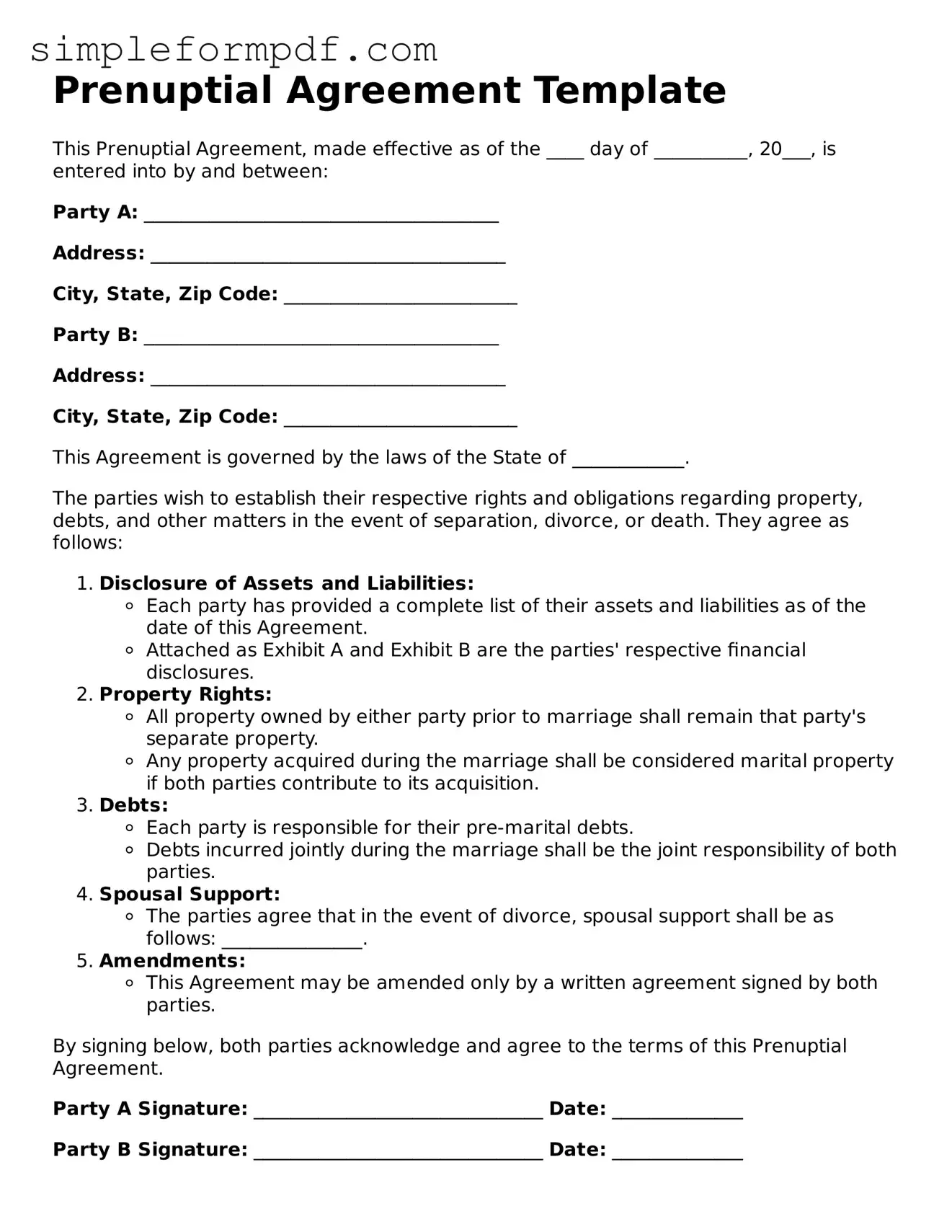Prenuptial Agreement Template
This Prenuptial Agreement, made effective as of the ____ day of __________, 20___, is entered into by and between:
Party A: ______________________________________
Address: ______________________________________
City, State, Zip Code: _________________________
Party B: ______________________________________
Address: ______________________________________
City, State, Zip Code: _________________________
This Agreement is governed by the laws of the State of ____________.
The parties wish to establish their respective rights and obligations regarding property, debts, and other matters in the event of separation, divorce, or death. They agree as follows:
- Disclosure of Assets and Liabilities:
- Each party has provided a complete list of their assets and liabilities as of the date of this Agreement.
- Attached as Exhibit A and Exhibit B are the parties' respective financial disclosures.
- Property Rights:
- All property owned by either party prior to marriage shall remain that party's separate property.
- Any property acquired during the marriage shall be considered marital property if both parties contribute to its acquisition.
- Debts:
- Each party is responsible for their pre-marital debts.
- Debts incurred jointly during the marriage shall be the joint responsibility of both parties.
- Spousal Support:
- The parties agree that in the event of divorce, spousal support shall be as follows: _______________.
- Amendments:
- This Agreement may be amended only by a written agreement signed by both parties.
By signing below, both parties acknowledge and agree to the terms of this Prenuptial Agreement.
Party A Signature: _______________________________ Date: ______________
Party B Signature: _______________________________ Date: ______________
Witnessed by:
Witness Signature: _______________________________ Date: ______________
Witness Name: ______________________________________
